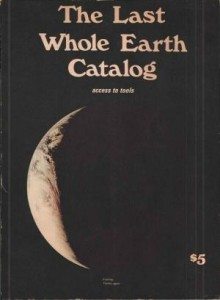 By Nicole Boreham, LuxEco Marketing Assistant
By Nicole Boreham, LuxEco Marketing Assistant
There are many important questions deriving from the Sixties. What is the legacy of the Sixties? What has changed? What aspects of the Sixties are important to maintain and preserve for future generations? What has really changed? How can we learn from the mistakes of the past?
The Sixties was a defining era in American history which was marked by complex, inter-related, and often bitterly polarized socio-cultural, political, and economic trends including the Vietnam War, the Cold War, the Oil Embargo (1967), the anti-war movement, the civil rights movement, the rise of feminism, and increased drug use, among numerous other factors. Ultimately, these controversial issues penetrated into the lives and affected the attitudes of all Americans, both individually and as a collective national identity.
It is a decade plastered with the iconic image of the “hippie,” which grew out of “counterculture,” a movement advocating exciting, new, subversive, and radical ideas and ideals which opposed the rigidity of existing socio-cultural constraints and policies and promoted personal empowerment, greater individual freedom through deviation from the status quo and social revolution.
 Although the “Swinging Sixties” can arguably be described as an era of flamboyance and irresponsible excess resulting from the widespread relaxation (in varying degrees), if not total abandonment of social and cultural taboos, especially those relating to sex and drugs (or at least the perception of lackadaisicalness or resignation), one could also contend that these pre-existing norms were forsaken because they were inherently irrational or because they were no longer relevant to or sufficient for the needs of modern society. However, gradually, these notions began to catch on with the American people, and as they became increasingly more accepted, public consciousness evolved, and eventually transformed from its original (pre-1960s) state; thus, a social revolution was born.
Although the “Swinging Sixties” can arguably be described as an era of flamboyance and irresponsible excess resulting from the widespread relaxation (in varying degrees), if not total abandonment of social and cultural taboos, especially those relating to sex and drugs (or at least the perception of lackadaisicalness or resignation), one could also contend that these pre-existing norms were forsaken because they were inherently irrational or because they were no longer relevant to or sufficient for the needs of modern society. However, gradually, these notions began to catch on with the American people, and as they became increasingly more accepted, public consciousness evolved, and eventually transformed from its original (pre-1960s) state; thus, a social revolution was born.
These driving forces are responsible for one of the most prolific works of our time, the Whole Earth Catalog. It all began on November 10, 1967, when the Department of Defense’s Gravity Experiment satellite produced what is arguably the most powerful images of all time: the first photograph of the whole Earth. Stewart Brand, a graduate of biology at Stanford University launched a campaign for the public release of the photo by distributing buttons that asked the following question: “WHY HAVEN’T WE SEEN A PHOTOGRAPH OF THE WHOLE EARTH YET?” When the photograph was finally published, it was more than anyone could have hoped for. In his book, Boom! Talking About the Sixties, Tom Brokaw explains that “It was, in fact, stunningly beautiful, and in the deep blackness of space, with the filigree of clouds, oceans, and land covering the planet, Earth somehow looked fragile and vulnerable. The photogr aph seemed to say, “Here I am, a precious place. Take care of me.”
aph seemed to say, “Here I am, a precious place. Take care of me.”
Brand incorporated this image into the first edition of the Whole Earth Catalog in 1968 to emphasize how everything fit within a larger picture and within the whole system. The purposes of the Catalog were to provide education and access to tools that allowed the reader to “find his own inspiration, shape his own environment and share his adventure with whoever is interested.” Brand loosely defined the meaning of the term “tools.” On the one hand, he provided itemized lists of everything from lawnmowers and chainsaws to early models of synthesizers and personal computers, but on the other hand, he depicted “tools” ideologically and philosophically, embracing “the great wave of experimentation” that existed at the time.













